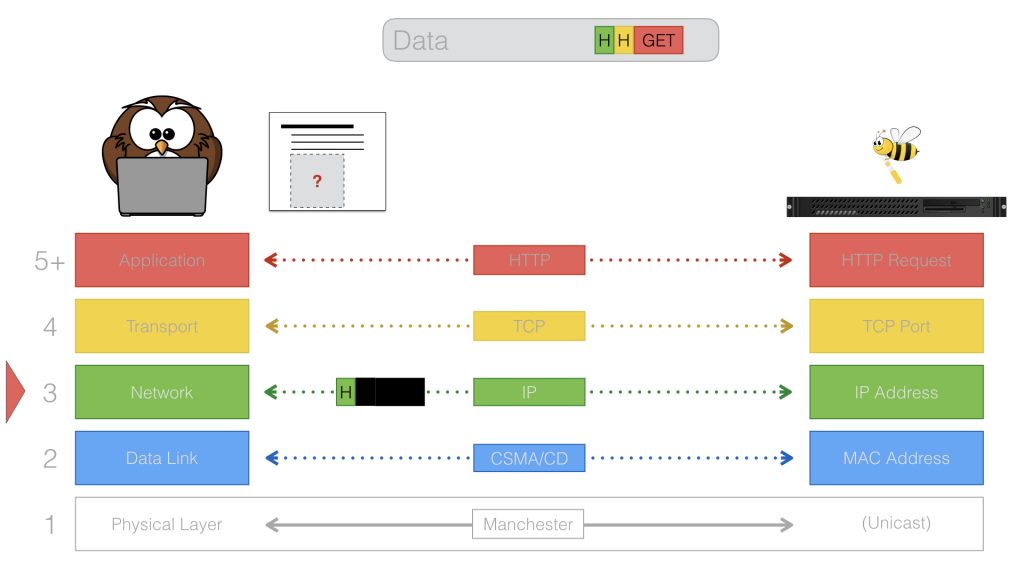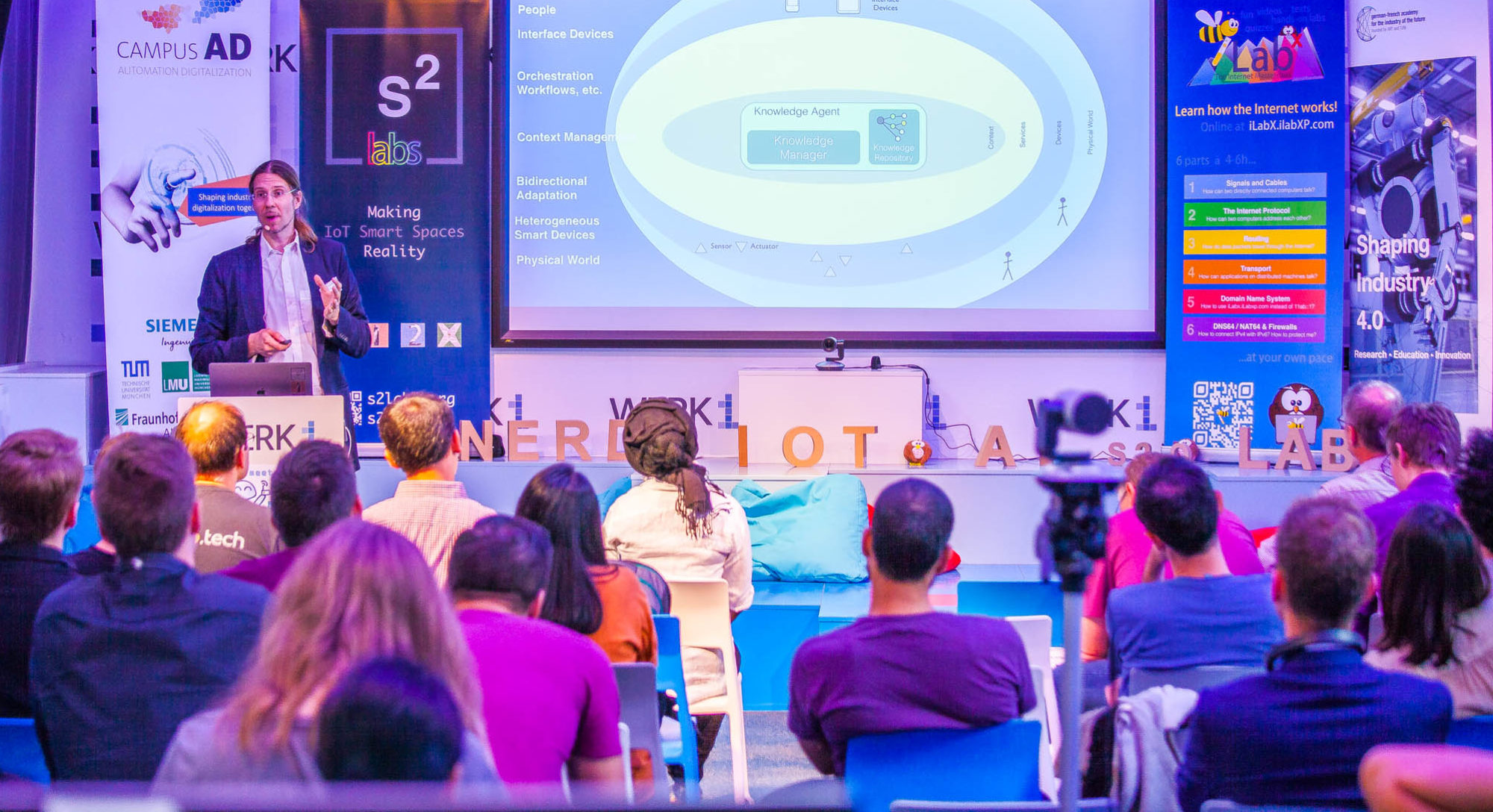vLab: Layer 3 (Network Layer)
Layer 2 only allows communication between directly connected hosts. Only with the help of the Network Layer communication over multiple hops becomes possible. The following image depicts where the Network layer is placed in the vLab network model:

The most relevant Layer 3 protocol, which basically the most relevant protocol for the complete vLab / TCP/IP / ISO/OSI model, is the Internet Protocol (IP). It comes in its two versions: IPv4 and IPv6.
IP messages are transported between hosts in the form of packets, where each packet has a specific destination IP address, identifying the receiver of the packet and a source IP address for identifying the sender.
Routers can use IP addresses in order to decide where they have to send a packet next in order for it to arrive at its destination.
This way packets can travel over multiple hops, in contrast to Layer 2 where only directly connected hosts could be addressed.
This is possible due to the logical structuring of IP addresses in hierarchical blocks. A router e.g. always knows that an IP address (e.g. 1.2.3.4 in IPv4) starting with a specific prefix (e.g. 1.2….) is always located in Australia and forward a packet with that destination IP in that direction (simplified). A router in Australia could then e.g. know in which country that IP is located and so on.
For exchanging information about which IP prefixes are reachable from which router, routers use so called routing protocols like RIP or OSPF.
Those protocols can automatically determine the best path for specific prefixes through the network.
Outlook iLabX
Learn more about the Network Layer mechanisms and protocols in our free Massive Open Online Course:
iLabX – The Internet Masterclass
There you also have the opportunity to do some experiments on Layer 3 using your own computer and our virtual network environment:
Those experiments include e.g. learning how IP address autoconfiguration in IPv6 works or observing the dynamic routing protocols RIP and OSPF doing their thing live in action.




